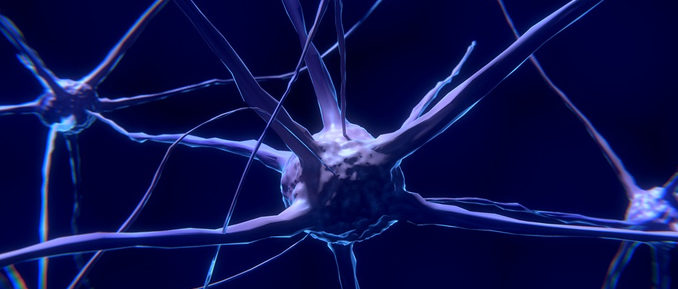
The neurotransmitter serotonin (also known as 5-hydroxytryptamine (5-HT)) has an absolute vast array of functions across the human body. Most commonly known to regulate mood, it is also key for the development of neurones. In fact, serotonin is linked to various mental disorders, including depression, which globally affects more than 300 million people.
It has long been assumed that serotonin has an indirect role in relation to epigenetic regulation1. The binding of serotonin to its receptor(s) causes a downstream cascade of signalling events which resultantly, can lead to the remodelling of chromatin and hence, epigenetics. Epigenetic events relating to serotonin has already been linked to stress, and more broadly, epigenetic ageing to mental disorders such as depression and bipolar disorder.
Just to note, the use of the term epigenetic refers to marks that are involved in potentially altering heritable gene activity states that are not dependent on changes in DNA sequence2. As such, they can include but are not exclusive to DNA methylation, histone modifications, non-coding RNA, and the structure of chromatin. Post-translational modifications (PTMs) to histones such as acetylation, phosphorylation, and methylation have been extensively studied.
Recent research from Farrelly et al. at the Icahn School of Medicine at Mount Sinai hones in on a completely new histone modification. They’ve discovered that histones can be marked directly with serotonin, bringing two groundbreaking findings to both the neuroscience and epigenetic fields — a novel role of serotonin and a novel histone modification.
Farrelly et al. started with the question – does serotonin have additional roles in the nucleus? As previously shown, transglutaminase 2 (TGM2) can bind serotonin to proteins outside the nucleus and more intriguingly, TGM2 can interact with histones. The investigation began, the researchers identified that serotonin can mark only one part of the histone octamer, and histone 3 (H3) and TGM2 was crucial for this to occur. The serotonin mark was even more specific, binding to the single amino acid – glutamine 5 (Q5 = single letter protein code) – on H3. If this amino acid was substituted for another, then H3 was not ‘serotonylated’.
The newly discovered histone mark, H3Q5Ser, is actually very close to the well-known mark histone 3 lysine 4 trimethylation (H3K4me3), which has been suggested to be indicative of active genes.
Cells located in the brain ubiquitously had both marks – of which Farrelly et al. coined “H3K4me3Q5ser”. The double modification was then studied in the context of serotonergic neuronal differentiation, which increased as cells matured into neurones from stem cells. The authors demonstrated that the dual mark strongly correlated differentiation when H3K4me3 alone did not. This high association suggests that serotonylation is required for the active gene expression state at sites marked with H3K4me3 and consequently that the two modifications are working ‘cooperatively’. The dual mark was even shown to have strong interactions with one of the key initiators of transcription (the first step in gene expression) – TFIID.
These are all fascinating discoveries in the field of neuroscience and epigenetics which opens up various new avenues of research. As the Mount Sinai press release3 reverberates:
Some of the exciting questions to be answered include: does serotonin’s regulation of gene expression, in addition to serotonin neurotransmission, also play a role in the regulation of mood? Could this new knowledge be used to develop better medications to treat depression or other mood disorders? How else might it affect the brain? Can a related neurotransmitter like dopamine, which plays an important role in substance use disorders, also be attached to histones to regulate gene expression in the brain?
The field of epigenetic welcomes its new histone modification into the fold. While it might make it more complicated to understand the role of certain histone modification combinations – exciting research is certainly due in the nearby future.
Source: Farrelly et al (March 2019) Histone serotonylation is a permissive modification that enhances TFIID binding to H3K4me3. Nature volume 567, pages 535–539.
References: 1. Holloway, T. et al. Epigenetic Mechanisms of Serotonin Signaling. ACS Chem. Neurosci. 2015, 6, 7, 1099-1109.
2. Bird, A. Perceptions of epigenetics. Nature 447, 396 (2007).
3. The Mount Sinai Hospital / Mount Sinai School of Medicine. “Mount Sinai Neuroscience Researchers Discover Surprise Role for Serotonin – The Brain Chemical Can Directly Regulate Gene Expression Inside Brain Cells”. Newsroom (March 13, 2019).

